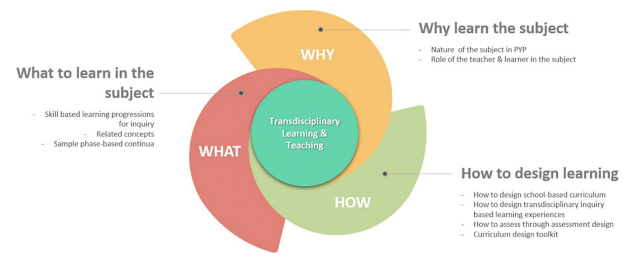A couple of months ago I became a grandma (now known as GrandMaggie). Compared to when I had my own children 30 years ago, there is now so much research available about the first weeks, months and years of a child's life. I have dipped in and out of books that my daughter-in-law has been reading (my son actually admitted that he has read 4 of these too which is quite an achievement for him), and I've watched the excellent AppleTV documentary series called Becoming You which deals with the first 2,000 days of a child's life (basically from birth to age 5) and how they learn to move, talk, think and love. The series covers over 100 children in 11 different countries. However the thing that is consistent across all these children is that they learn through play.
As someone who has spent most of 2023 deeply embedded in the work of the PYP curriculum team, I also decided to take a look at one of the IB publications entitled Inquiry through play, which is a document aimed at supporting PYP parents (and grandparents!). Both the documentary series and the publication highlight that from birth children are hands-on natural inquirers and that they learn through playful interactions with people and their environment.
I really like the way this publication links play with the approaches to learning skills, which help a child to be successful not just in school but throughout life. There is a great graphic which I'm coping below that shows how play can help develop these skills (click on the image to enlarge it).
The IB publication goes on to describe how play not only develops skills, but also is important for the social, emotional, physical and mental wellbeing of children. For example play can encourage children to explore their own creativity in a way that is fun and enjoyable, and it can also help children to make meaning of what has happened to them, and can help them to recover a sense of normality and overcome emotional pain, thereby helping to give them control over their own lives after an experience of loss or trauma.
For me the most important thing is that children are naturally capable - they have a sense of agency and they are curious learners. According to UNICEF and the Lego Foundation, play has 5 characteristics:
- It is meaningful and helps children make sense of the world as new experiences are connected to something already known, so building understanding.
- It is joyful and encourages motivation and pleasure.
- It is actively engaging - children become deeply involved.
- It is iterative, encouraging children to practice skills, try out possibilities and discover new challenges.
- It is social - children communicate ideas in order to build deeper understanding and more powerful relationships.
There are many different types of play. It can be free play which is child-led, or it can be guided play which is scaffolded by an adult. In some cases play can be adult designed and controlled or scaffolded such as when playing games with rules.
What advice does this document give to parents to encourage free play? This falls into 5 main areas: materials, space, time, mess and support. Materials can be commercial produced toys or can be objects that are found around the home, which can stimulate imaginative play (for example boxes, small objects for sorting and counting and so on). Play can take place indoors or outdoors, in large or small spaces. However it is important to provide plenty of uninterrupted time for play so that children become deeply involved. Play is often not tidy so it's good to be OK with some mess. Finally it's valuable for parents to join in with the play, while being careful to respect the child's rules and decisions (so supporting the play rather than leading the play). Joining in with the play means you will be talking to your child and showing them you value what they are doing. It also helps you to model behaviours that you want to encourage such as turn taking and problem solving. Focus on asking open-ended questions to encourage discussion such as "I wonder what would happen if you ....?" or "Why do you think this happened?" or "Is there another way to try this?"
Of course the first 2000 days are only the start. Play is something that continues beyond childhood. The
National Institute for Play explains how play is important for a health life: we need to play to keep our brains flexible, ward off depression, sustain optimism and sharpen our social-emotional skills. However play is also very individual: playing a sport may or may not be playful, depending on your attitute, and something that looks really difficult, such as writing a book, may also be seen as play if the person doing it is engaged and feeling content with the challenge. Clearly we can all benefit from adding more play into our lives.
Image by FeeLoona from Pixabay. Free for use under the Pixabay Content License








